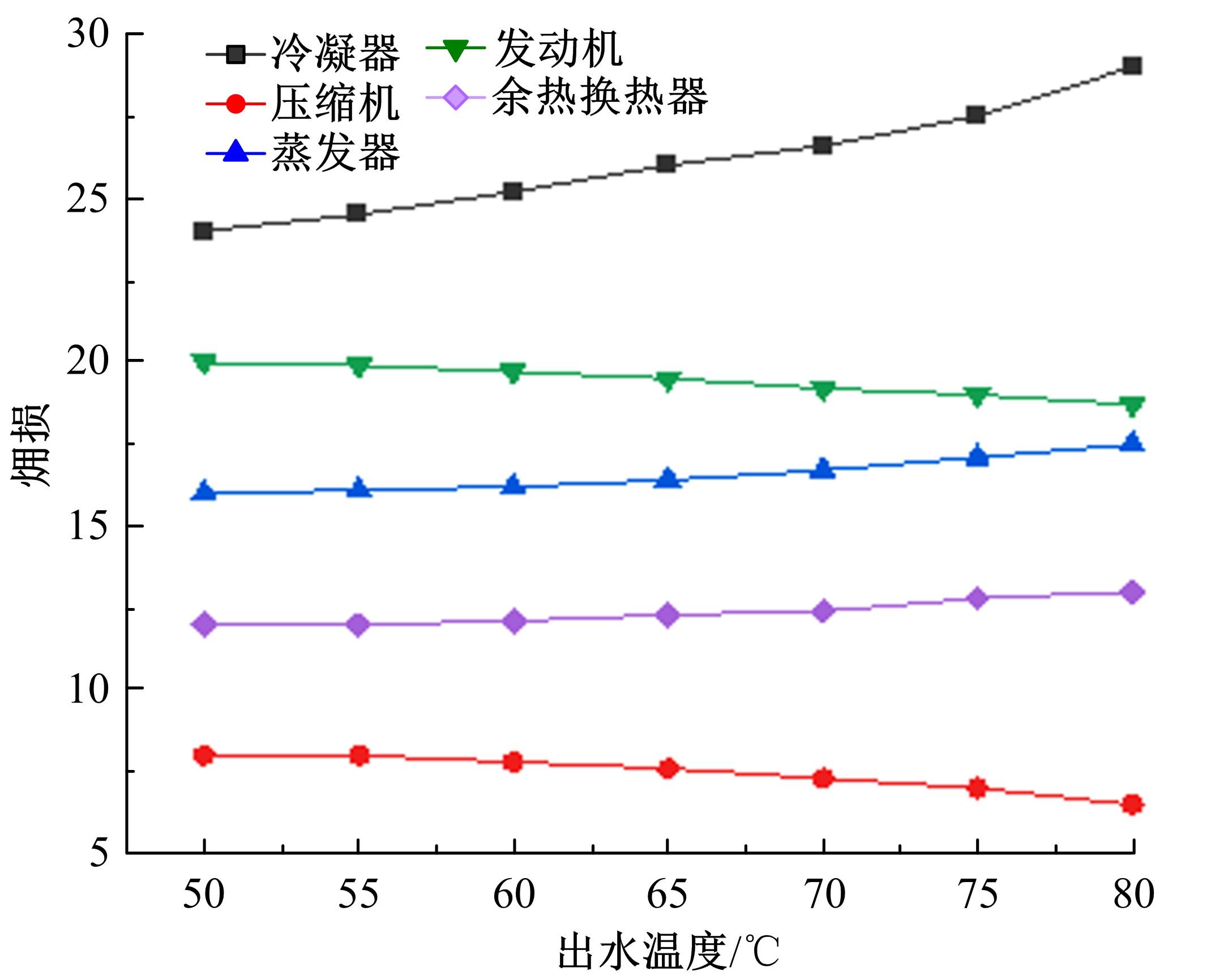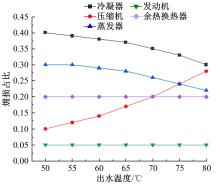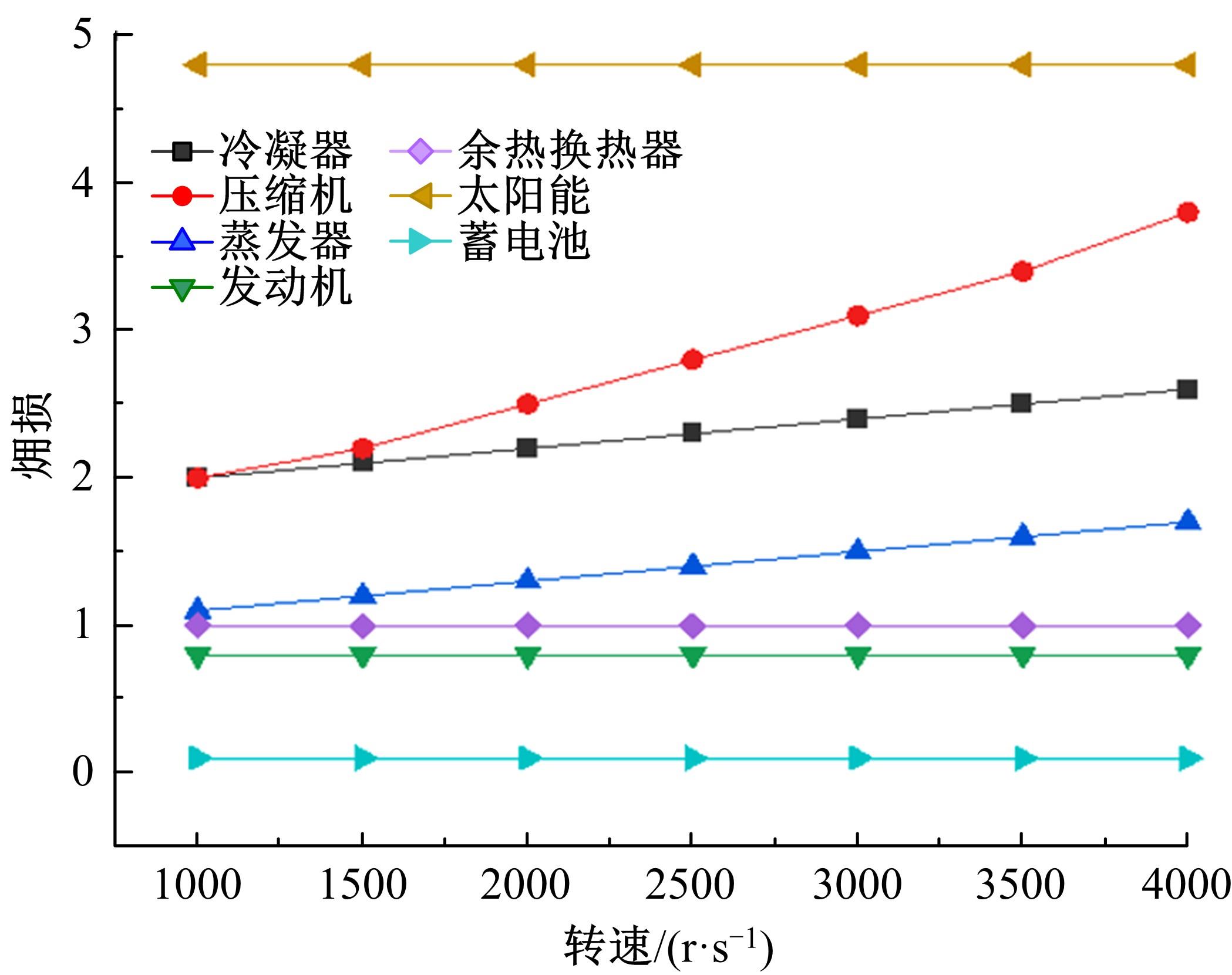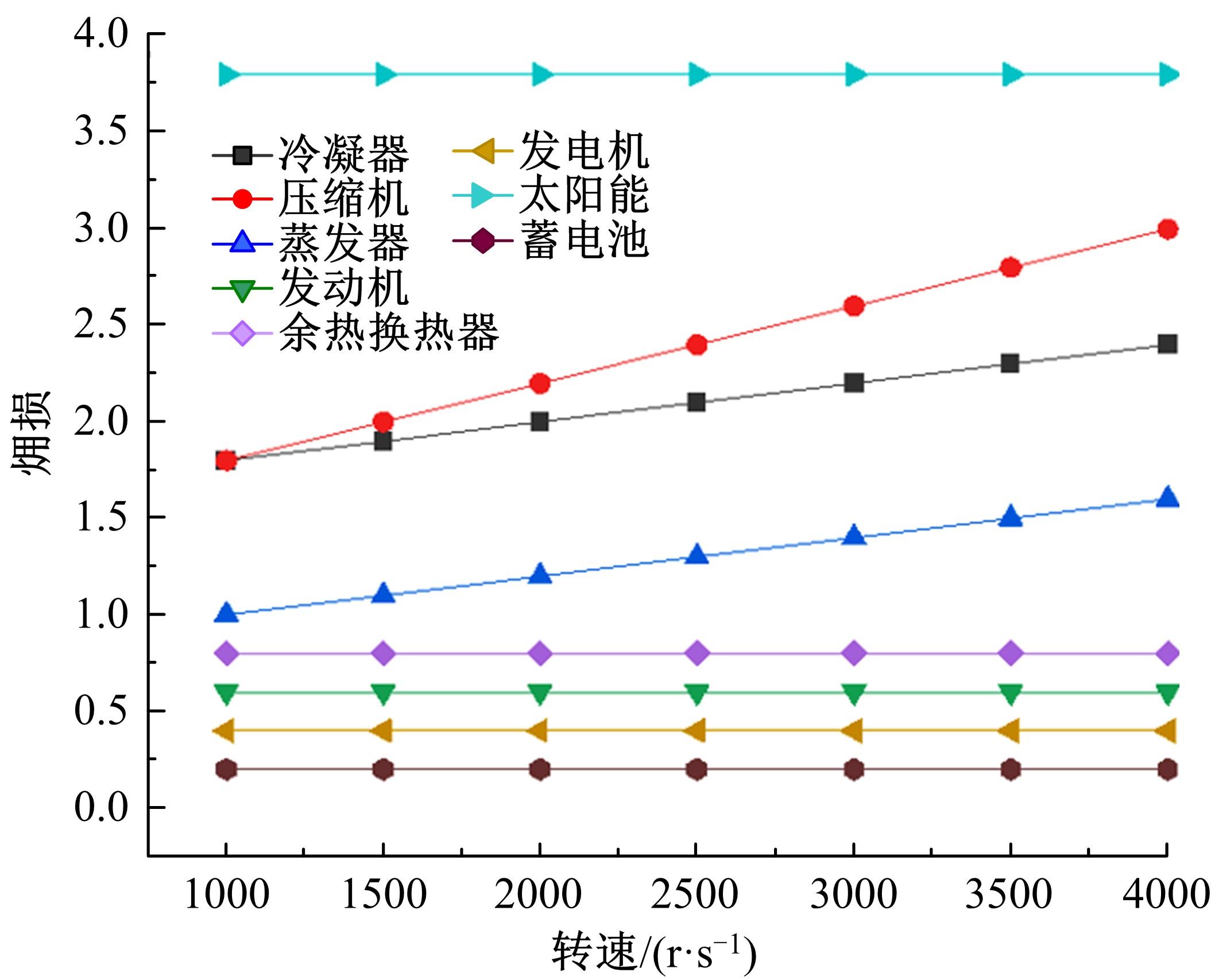Journal of Jilin University(Engineering and Technology Edition) ›› 2022, Vol. 52 ›› Issue (8): 1759-1763.doi: 10.13229/j.cnki.jdxbgxb20211464
Therodynamic performance of compound solar energy gas engine heat pump
Zhen-jun XU1( ),Hao WANG2,Kai-yuan ZHAO2,Bo-yi HAO2,Qing-qing LI1,Chang-hao WANG1
),Hao WANG2,Kai-yuan ZHAO2,Bo-yi HAO2,Qing-qing LI1,Chang-hao WANG1
- 1.College of Civil Engineering&Architecture,Qingdao Agricultural University,Qingdao 266300,China
2.Mechanical and Electrical Engineering,Qingdao Institute of Technology,Qingdao 266300,China
CLC Number:
- TB61
| 1 | 徐振军. 独立式内燃机热泵系统及其控制特性实验研究[D]. 天津: 天津大学机械工程学院, 2009. |
| Xu Zhen-jun. Experiment research for independent engine-driven heat pump system[D]. Tianjin: College of Mechanical Engineering, Tianjin University,2009. | |
| 2 | 徐振军. 复合发电系统的沼气热泵供能特性研究[J]. 农业机械学报, 2011, 42(7): 144-147. |
| Xu Zhen-jun. Energy supply performance for biogas heat pump with generator[J]. Transactions of the Chinese Society for Agricultural Machinery, 2011,42(7): 144-147. | |
| 3 | 方筝, 杨昭, 陈轶光. 冷热电三联供燃气机热泵系统的火用损功率分析[J]. 热能动力工程, 2009, 24(1): 53-59, 142. |
| Fang Zheng, Yang Zhao, Chen Yi-guang, Exergy loss power analysis of gas engine heat pump system with combined cooling, heating and power supply[J]. Journal of Engineering for Thermal Energy and Power, 2009, 24(1): 53-59, 142. | |
| 4 | 段超. 太阳能与热泵互补驱动的中空纤维膜海水淡化系统研究与热力学分析[D]. 广州: 华南理工大学化学与化工学院, 2019. |
| Duan Chao. Experimental investigation and thermodynamic analysis of hollow fiber membrane-based desalination system driven by solar energy and heat pump[D]. Guangzhou: School of Chemistry and Chemical Engineering, South China University of Technology, 2019. | |
| 5 | 何仁, 杨柳, 胡东海. 冷藏运输车太阳能辅助供电制冷系统设计及分析[J]. 吉林大学学报: 工学版, 2018, 48(6): 1645-1652. |
| He Ren, Yang Liu, Hu Dong-hai. Design and analysis of refrigeration system supplied by solar auxiliary power of refrigerator car[J]. Journal of Jilin University (Engineering and Technology Edition), 2018, 48(6): 1645-1652. | |
| 6 | 李明, 薛庆峰, 张可欣, 等. 电动汽车热泵空调系统性能分析[J]. 吉林大学学报: 工学版, 2021, 51(6): 1943-1952. |
| Li Ming, Xue Qing-feng, Zhang Ke-xin, et al. Performance analysis of electric vehicle heat pump air conditioning system[J]. Journal of Jilin University (Engineering and Technology Edition), 2021, 51(6): 1943-1952. | |
| 7 | 齐子姝, 高青, 刘研, 等. 联供模式地下换热器温变及其热泵效能分析[J]. 吉林大学学报: 工学版,2012, 42(2): 339-343. |
| Qi Zi-shu, Gao Qing, Liu Yan, et al. Analysis of temperature of underground heat exchanger and efficiency of heat pump with combined cooling and heating[J]. Journal of Jilin University(Engineering and Technology Edition), 2012, 42(2): 339-343. | |
| 8 | Petela R. Exergy of undiluted thermal radiation[J]. Solar Energy, 2003, 74(6): 469-488. |
| 9 | Gunerhan H, Hepbasli A. Exergetic modeling and performance evaluation of solar water heating systems for building applications[J]. Energy and Buildings, 2007, 39(5): 509-516. |
| [1] | JIN Jing-fu, HAN Li-man, CAO Min, LI Yang, QI Ying-chun, CONG Qian. Volume expansion rule of water droplets during freezing process [J]. 吉林大学学报(工学版), 2016, 46(5): 1546-1551. |
| [2] | LIU Yuan-ning, XU Bao-lin, ZHANG Hao, CHEN Jing-bo, HAN Ye, YU Jian-long. Selecting highly effective siRNAs by thermodynamics of siRNA-mRNA binding [J]. 吉林大学学报(工学版), 2014, 44(01): 191-195. |
| [3] | CAO Min, CHEN Ting-kun, CONG Qian, JIN Jing-fu. Influence of PMMA surface morphology on ice adhesion strength [J]. 吉林大学学报(工学版), 2013, 43(05): 1314-1319. |
| [4] |
Li Zhong-jian,Zheng Mao-yu,Wang Fang .
Optimization of irreversible fourheatsource absorption refrigerator with finite heat capacity [J]. 吉林大学学报(工学版), 2008, 38(02): 283-0286. |
| [5] |
Nie Jian-jun,Du Fa-rong,Gao Feng .
Finite time thermodynamics of real combined power cycle operating between internal combustion engine and Stirling engine with heat leak [J]. 吉林大学学报(工学版), 2007, 37(03): 518-0523. |
| [6] | ZHAO Yuqian, FANG Shijie, ZHAO Yuguang, CONG Yu, TU Mingjin, JIANG Qichuan. Thermodynamic Calculation and Analysis of Steel Matrix Composite of (Ti,Fe)-Al-C System [J]. 吉林大学学报(工学版), 2005, 35(04): 343-347. |
| [7] | ZHAO Yu-guang, JIANG Qi-chuan, REN Lu-quan, Qin Qing-dong. Thermodynamic analysis on in-situ TiC synthesis in Fe-C-Ti-Mn system [J]. 吉林大学学报(工学版), 2004, (1): 1-6. |
|
||









